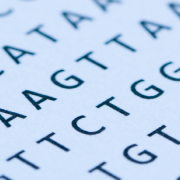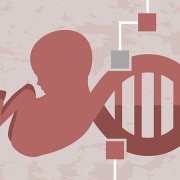Hereditary haemochromatosis a ‘stealth disease’
Recent genomic research has shed new light on the condition, previously thought to be low risk, prompting a review of screening regulation
A recent study has revealed that hereditary haemochromatosis, a common – and treatable – genetic condition, is causing more harm than previously thought.
Published in the British Medical Journal in January 2019, the study shows that hereditary haemochromatosis, which was previously thought to be a low-level health risk, is linked to significant morbidities including liver disease, arthritis, diabetes and cancer.
The findings could have direct clinical implications since symptoms can be prevented with early diagnosis.
Hereditary haemochromatosis
A common disease, especially among people of European descent, hereditary haemochromatosis is caused by mutations in the HFE gene – especially a variant called C282Y; 10-15% of people with northern European ancestry carry this variant and around 1 in 150 have two copies of the variant (this is known as being homozygous).
Being homozygous for C282Y causes people to absorb too much iron from their diets, which can then build up in the body causing fatigue, joint and skin problems, sexual health issues and even organ damage.
However, many people do not exhibit clinical symptoms and so remain undiagnosed. Haemochromatosis has long been considered a low-level health risk – until now.
Genomic data uncovers risks to health
The researchers used data from the UK BioBank to study 451,243 participants of European ancestry aged between 40 and 70. Comparing genomes and linked hospital records, they found that having two variant copies of HFE led to substantial morbidity in both men and women.
In a seven-year period, 15.7% of the men with two copies of the variant exhibited one or more occurrences of haemochromatosis-associated iron overload, liver disease, rheumatoid arthritis, osteoarthritis and diabetes mellitus, compared to five percent of men with two unaffected copies. For women the figures were 10.1 and 3.4% respectively.
“We’ve shown that hereditary haemochromatosis is actually a much more common and stealth disease,” said lead researcher Professor David Melzer from the University of Exeter. “We now need to test ways of screening and diagnosing haemochromatosis earlier. It’s exciting to think that better care might prevent so much unnecessary disease.”
Screening and simple management
The treatment of hereditary haemochromatosis is simple and low cost: patients have blood drawn every few weeks, and the body uses up some of the excess iron, replacing the red blood cells each time. Once iron concentrations return to an acceptable level, the frequency of phlebotomy treatments can be reduced, normally to a quarterly schedule, and the blood can even be donated.
The earlier a patient is diagnosed and phlebotomy started, the less damage the excess iron will cause in the body, and the less likely the patient is to suffer from associated morbidities.
Professor Melzer said: “We are now able to prevent so much unnecessary disease with a simple test and treatment, which is a win-win. It is safe, effective and cheap. Economic data shows testing would pay for itself, because the cost of paying for treatment in late stages of disease is enormous.”
The UK National Screening Committee will now “look at the evidence to screen for haemochromatosis in 2019/20, as part of its routine three-yearly review”.
–









